The moment of truth has come and gone. You have released the arrow, and the excitement is slowly giving way to guarded optimism as you replay the shot in your mind. You have taken landmarks and stared at the exact spot where you last saw the fleeing deer until you are certain it is indelibly burned into your memory. Now it’s time to determine the results of the shot, which will necessarily fall into one of four categories: 1. A clean miss. 2. A trivial hit of no threat to the deer’s life. 3. A potentially lethal hit that may not result in the immediate death of the animal. 4. A deer that’s dead already.
You will have a lot to think about during the course of the upcoming recovery effort, but the most immediate decision involves when to take up the trail. Again, there are a limited number of possibilities: 1. Retreat from the area immediately and return later at a time to be determined. 2. Wait for an arbitrary length of time (often one hour) and then take up the track. 3. Head out shortly so you can tag the deer (which you feel confident is dead) and start field dressing.
The choice you make can produce a pleasant surprise (recovery of a dead deer you didn’t think you’d killed) or a disaster (losing a mortally wounded animal you think you should have recovered). A number of factors can influence this decision as we’ll see, but the most important is an accurate assessment of the shot’s result as outlined in the first paragraph.
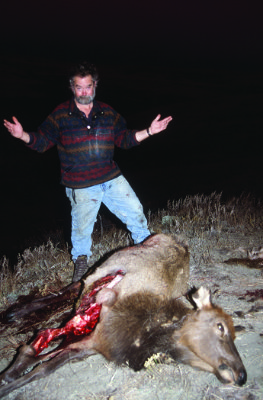
Don didn’t like his hit on this cow elk just before dark. Consequently, he and Lori waited until early morning to track it, allowing the loss of a quarter to coyotes.
Two of those possibilities can be addressed quickly. The first—a clean miss—requires no follow-up, as long as you are positively certain that’s the case. Initially that determination requires the same kind of attention you’d devote to a wounded animal. Even if I’m confident of a clean miss, I start looking for confirmatory evidence, often within a matter of minutes. (However, if there is any doubt at all it’s better to err on the side of patience.) Proceed to the spot where the animal was standing when the shot took place and begin a careful search for sign—blood, hair, tracks that just don’t look right, or most definitively, a squeaky-clean arrow. Cover all of those bases with no positive findings and you can go home and work on your archery.
The last of those four possibilities, certainty of a dead animal, really doesn’t require waiting, especially in the presence of mitigating factors soon to be discussed. However, no matter how certain I feel about a good shot, I seldom make this assumption unless I can see the animal down. Even then, I usually observe the scene for at least 15 minutes to make sure the “dead” animal isn’t going to jump up and run off as I approach. In the case of dangerous game like a bear or water buffalo, I’ll watch even longer.
The second possible outcome listed above—a trivial hit—can pose a difficult problem. My first impressions of a hit have proven quite accurate over the years, but even if I feel certain the arrow missed all vital structures, confirmation of contact between arrow and quarry requires treating the shot as a potentially fatal wound until proven otherwise. The best evidence in this case again comes from the arrow, which is why a diligent search for it is always a priority. Any evidence of blood or hair requires follow-up, which I usually delay for at least an hour. (Of course, if the fletches are soaked with lung blood or the shaft carries evidence of paunch, that decision may change.)
This brings us to the toughest case of all, an estimation that the wound will be lethal although not necessarily at once. Examples include anything involving paunch; one lung with or without something else; or even a solid hit in the neck or leg. This is where judgement and a holistic approach to the entire situation come into play, including a careful evaluation of factors external to the animal or the arrow.
Standard advice to wait a given number of hours is fine as far as it goes, but every situation is different. As a general rule, you’ll seldom go wrong waiting longer than you think you should at first. However, certain factors can justify starting on the trail sooner than the rules suggest.
Weather is the big one. I always like to have at least a rough idea of what the skies are going to do over the next 24 hours before I start hunting. Rain can make an easy trail difficult, and snow can obliterate all sign completely. If those are in the forecast, I like to start trailing well before the precipitation starts.
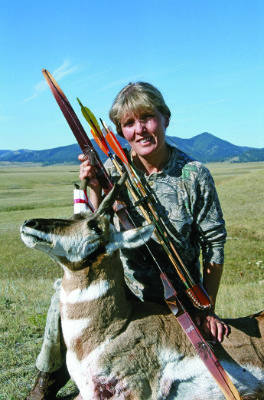
The weather during Montana’s early season is almost always hot, which can lead to meat loss even on small animals like pronghorns. Fortunately, Lori watched this one drop.
Hot weather can be just as problematic, especially for those of us who care more about meat than horns. Even in a cold state like Montana, heat can make quick recovery a priority during early antelope and elk seasons. When it’s really hot I just won’t hunt elk because of the danger of meat spoilage, but I’ve taken off after some wounded pronghorns a lot sooner than standard “wait an hour” advice would hold. I’ve never lost any antelope meat to heat, nor have I lost one because I started the recovery too soon. In these cases, open terrain really works in the hunter’s favor.
Time of day is another consideration. It’s certainly easier to track by daylight, and the ability to see a wounded animal before it sees you can be game-changing. However, I would have to be fairly certain the animal was dead before setting out sooner than I thought wise just to avoid tracking in the dark.
Scavengers can provide another incentive to start early. The significance of this factor depends largely on the nature, density, and behavior of the local scavenger population, so it’s hard to generalize. In southern Africa, jackals and vultures can locate and destroy a carcass with remarkable speed, so any degree of confidence in a hit usually warrants starting at once. I never had a bear beat me to a carcass in Alaska, and I got by for years without losing any game to hungry critters in Montana. However, in the last decade I have lost two deer, one antelope, and half a cow elk to coyotes, and another deer to an unethical hunter who saw no reason not to claim one I’d shot while Lori and I were waiting to follow it. Other factors being equal, I sometimes begin shot follow-up sooner than I once would have in order to avoid adding to that list.
We’ve just looked at reasons to start tracking sooner than conventional advice might suggest. I won’t spend time on reasons to wait longer simply because the default position should always be to wait longer. When in doubt, give it another hour unless you’re facing one of the problems mentioned above. Be flexible and use your judgement. “Wait an hour” is perfectly reasonable advice, but in some situations that interval can be too long and even more often it can be way too short.
Although the memory is still painful 25 years after the fact, I’ll illustrate that point by describing one of the few absolute mistakes I’ve made about deciding when to take up a track. Late one November afternoon, I shot a whitetail buck in a wooded coulee that borders one of our alfalfa fields. Although the hit was solid, it definitely fell into the “lethal but maybe not immediately” category. The deer ran uphill and into the harvested field before disappearing over a rise.
The problem was that there were no landmarks with which to mark the spot where I last saw him in the featureless open field. I remained still for nearly an hour and then set off cautiously. I wasn’t looking for the deer, although I wouldn’t have been surprised to see him lying dead nearby. All I wanted was a good starting point from which to begin the following morning. Because of heavy game traffic in the area, broken blades of grass didn’t mean much. I just wanted one spot of blood so I could mark it with an arrow before I retreated. With snow in the forecast and angry clouds gathering overhead, I decided I needed to do that sooner rather than later.
I thought that if the deer wasn’t dead, he surely would have retreated back down into the woods. To my surprise, however, I jumped him from the open field as soon as my head popped over the rise. I sat down at once and watched him walk slowly down to the pasture fence, where he stopped with his head lowered. Several times, he gathered his legs as if he was about to jump the fence, but he just couldn’t do it. Certain he was about to die, I backed out feeling confident that I’d find him nearby the following morning.
And I did find him… unfortunately, during the following spring turkey season half a mile from where I’d last seen him. There was enough left of the carcass for me to confirm my initial shot impressions: high and a little bit back but angling forward and down through the thorax. The wounded deer’s behavior was unusual, but I still should have known better. Although my decision to start tracking early was reasonable given the circumstances, it proved to be wrong, as I hereby admit in hopes of sparing someone else a lesson learned the hard way.
In deciding when to take up a track, one size definitely does not fit all.
Former co-editor Don Thomas and his wife Lori live in rural Montana with too many dogs.
- Initially, Doug Borland wasn’t certain about the hit on this moose. With bears in the area, they only waited an hour to take up the trail. Turns out, he’d hit it perfectly.
- This buck still had his head up at last light, so Don waited until morning to recover it. The coyotes didn’t leave me much.


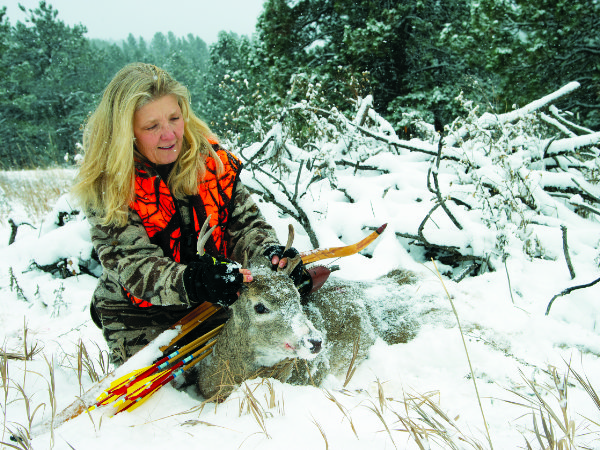
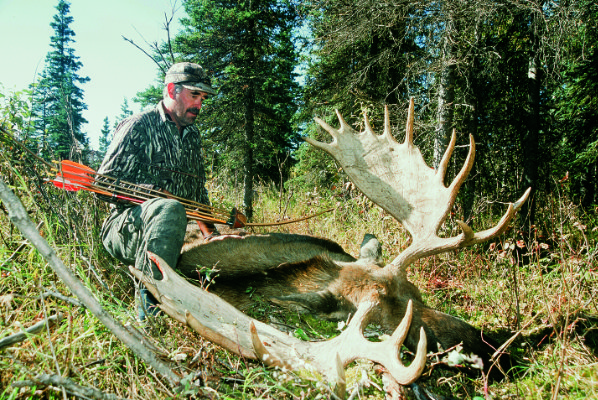
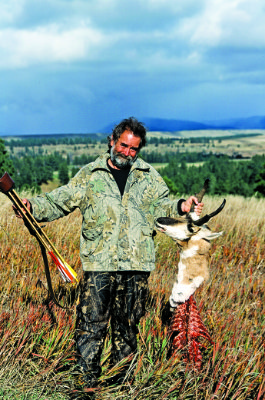


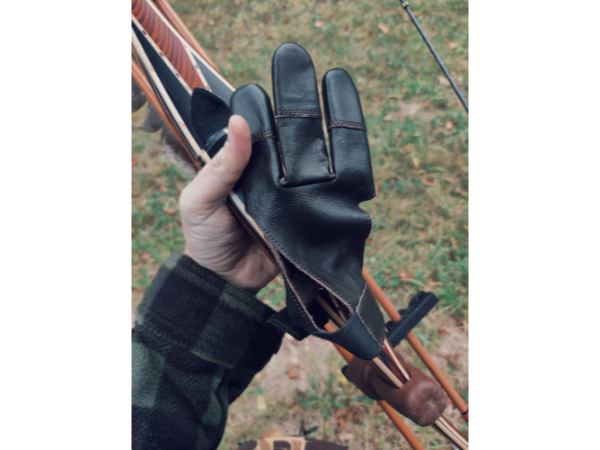

Leave A Comment